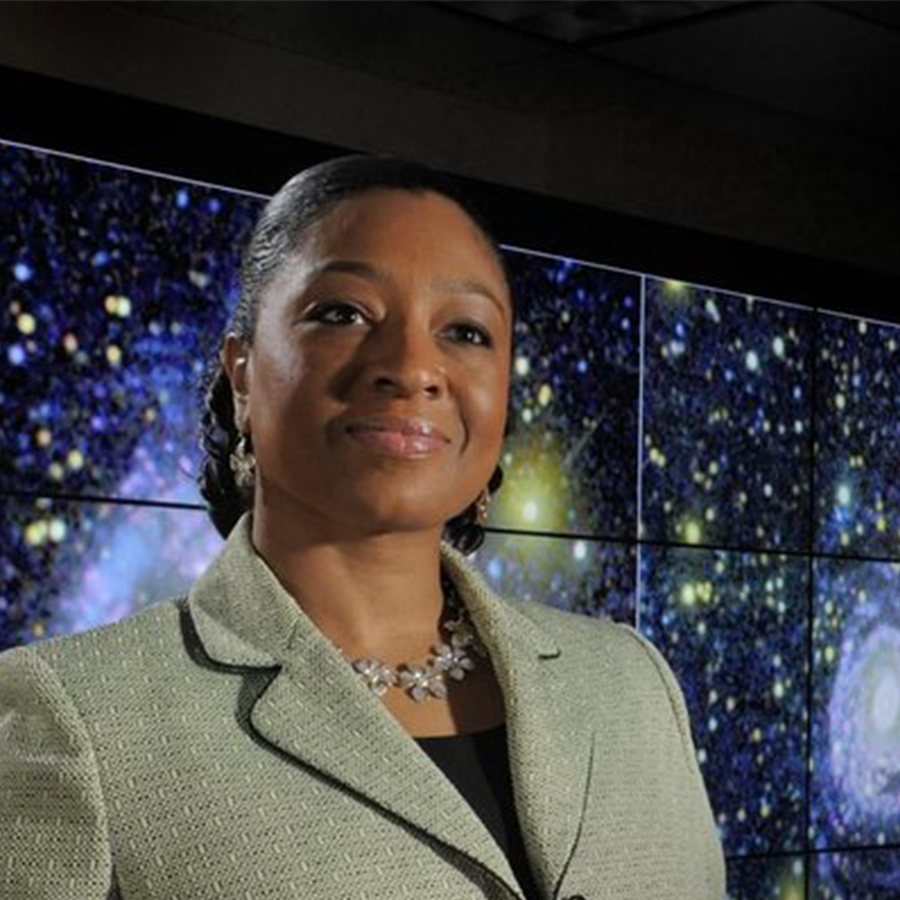

Dr Christyl Johnson
Deputy Director for Technology and Research Investments, NASA Goddard
Dr Christyl Johnson
Dr. Christyl Johnson is Goddard’s deputy director for technology and research investments. She manages the center’s research and development portfolio, and is responsible for formulating the center’s future science mission and technology goals and objectives, and leading an integrated program of investments aligned to meet those goals.
Christyl Johnson joined NASA Goddard as deputy center director for science and technology on Dec. 6, 2010. In July 2012 then-Goddard Center Director Chris Scolese reorganized some of the responsibilities of the Goddard Executive Council, at which point Johnson assumed her role as deputy director for technology and research investments.
Johnson came to NASA Goddard from the White House Office of Science and Technology Policy, where she served under the President’s science adviser as the executive director of the National Science and Technology Council (NSTC), which is the principal means within the executive branch to coordinate science and technology policy across the Federal research and development enterprise. She was responsible for ensuring the establishment of clear national goals for Federal science and technology investments in a broad array of areas across the executive branch, including basic science, technology, energy, environment, natural resources, and homeland and national security.
Prior to joining the White House staff, Johnson served as the assistant associate administrator in NASA’s Office of the Administrator. In this role, she and the associate administrator provided the oversight of the agency’s technical mission areas and field center operations.
Johnson came to the Office of the Administrator from the Office of the Chief Engineer, where she served as the deputy chief engineer for program integration and operations. There, she provided an integrated focus for the development, maintenance, and implementation of agency engineering and program/project management policies, standards, and practices.
Prior to her appointment to the Office of the Chief Engineer, Johnson served as the associate director for exploratory missions in the Office of Earth Science, where she managed the formulation and development for all exploratory missions. The missions that she managed included QuikToms, GRACE, CLOUDSAT, Triana, AQUARIUS, HYDROS and OCO, and involved mission development activities at Jet Propulsion Laboratory, Goddard Space Flight Center, Langley Research Center and several international and industry partners.
Johnson began her career at Langley Research Center in Hampton, Va., in 1985 in the Remote Sensing Technology Branch where she designed and built laser systems for advanced active remote sensors. In 1991, she became the program manager and lead engineer of the Diode-Pumped Cr:LiSAF Technology Development Program. In this role she established several initiatives, one of which was an industry and NASA collaboration to build an efficient Differential Absorption Lidar for remote sensing of water vapor. Under this program, Johnson delivered the first tunable diode-pumped Cr: LiSAF laser system to achieve 33 mJ. This achievement was highlighted internationally, and Johnson was invited to collaborate with scientists at Los Alamos National Labs, using this laser system for three weeks of field measurements in the desert of New Mexico. Johnson also established a state-of-the-art laboratory for stress optic coefficient measurement of laser crystals, and utilized this laboratory to provide the science community and laser industry with the first stress optic coefficients for the Cr:LiSAF laser material. Johnson held a variety of project management and senior engineering positions at Langley involved in the design, development and application of state-of-the-art and advanced systems and subsystems for atmospheric, aeronautic and space flight research missions.
Johnson earned her bachelor’s degree in physics from Lincoln University, a master’s degree in electrical engineering from Pennsylvania State University, and a Ph.D. in systems engineering from George Washington University.
